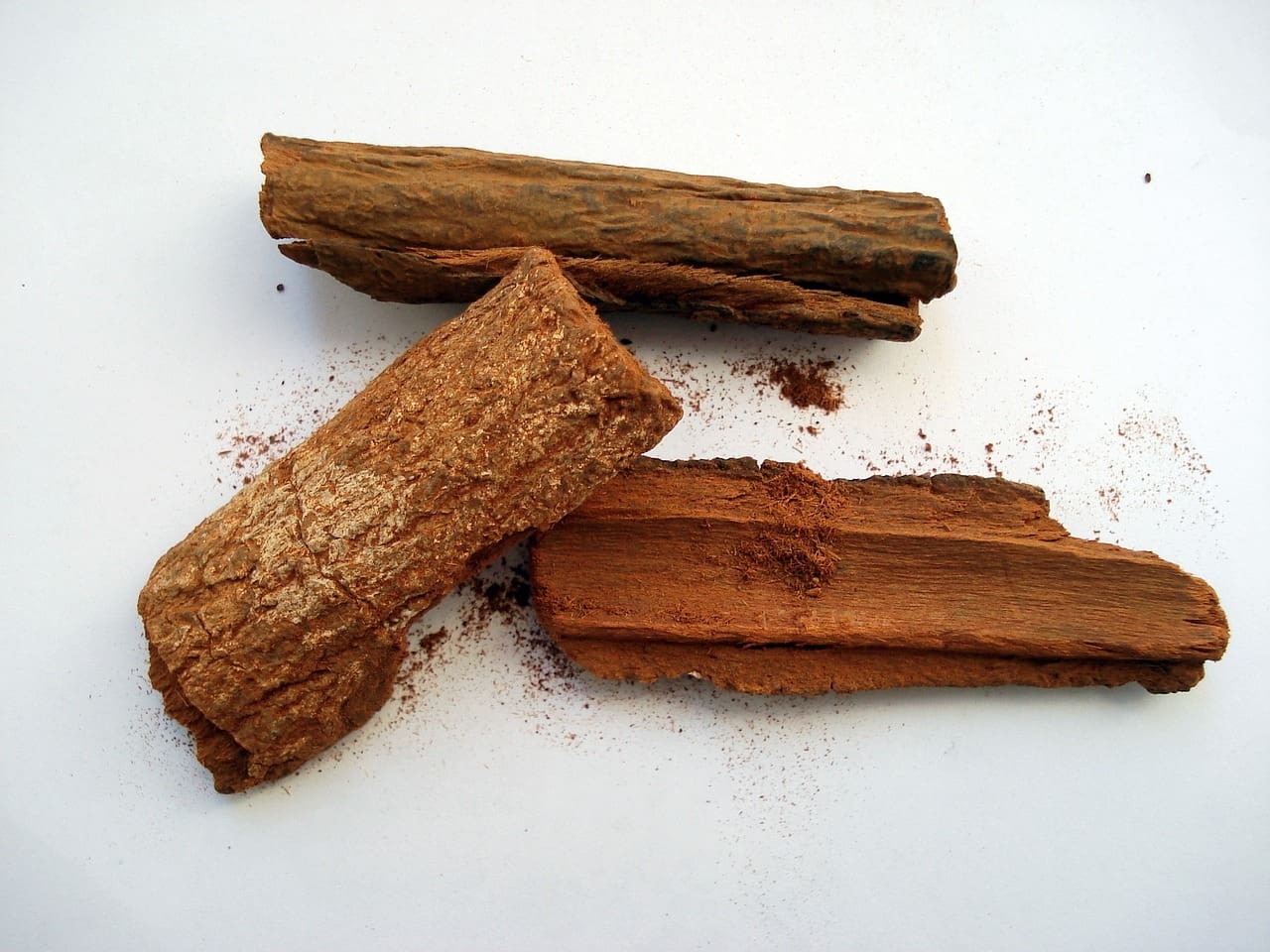Spices play a vital role in meals. Many types of flavor-increasing agents are used in dishes. Cinnamon bark and cinchona bark are two different kinds of flavor-enhancing agents in food items.
They also have many medicinal values. Cinnamon bark and cinchona bark are selling worldwide.
Key Takeaways
- Cinnamon bark comes from the Cinnamomum tree and is used as a popular spice, while cinchona bark is derived from the Cinchona tree and is a source of quinine, a compound used to treat malaria.
- Cinnamon bark has a sweet, warm flavor and is used in various culinary applications, whereas cinchona bark has a bitter taste and is primarily used for medicinal purposes.
- Cinnamon bark is commonly available in ground form or as cinnamon sticks, while cinchona bark is found as a raw ingredient or in tonic water and other beverages.
Cinnamon Bark vs Cinchona Bark
Cinnamon bark and cinchona bark come from different trees and serve unique purposes. Cinnamon bark, harvested from the Cinnamomum tree, adds a warm, sweet, and spicy flavor to dishes. Cinchona bark, sourced from the Cinchona tree, contains quinine, an essential compound for treating malaria and other medical conditions.

Cinnamon bark comes from the tree. The bark of cinnamon is used as medicine for many treatments. Diseases like gastrointestinal upset, diarrhea are treated by cinnamon bark.
Along with the above diseases, the cinnamon bark is also used to increase appetite, treat the common cold, and reduce menstrual cramps.
Other than medicinal uses, it is also used in food items. The cinnamon bark increases the flavors of the dishes and is used as spice ingredients.
Cinchona bark comes from the tree cinchona which belongs to the family Rubiaceae. The family Rubiaceae has 23 species. All the plants and trees that come under the Rubiaceae are native to the tropical Andean forest.
Cinchona is historically known for its high medicinal value. The cinchona bark is a spice that contains quinine and alkaloids. The cinchona bark is used in the treatment of malaria during European colonialism.
During that time cinchona becomes a more economical and politically important plant. In 1944, the artificial synthesis of quinine is increased.
Comparison Table
| Parameters of comparison | Cinnamon | Cinchona Bark |
|---|---|---|
| Family | Lauraceae | Rubiaceae |
| Order | Laurales | Gentianales |
| Treatment | Fungal diseases | Malarial diseases |
| Chemical content | Cinnamaldehyde | Alkaloid |
| Taste | Hot aromatic taste | Highly bitter and astringent |
What is Cinnamon Bark?
Cinnamon bark is used in the production of cinnamon oil. Products like toothpaste, mouthwash, liniments, detergents, soaps, and gargles are also using cinnamon bark as an ingredient.
Cinnamomum verum and Cinnamomum aromaticum are the commonly used cinnamon barks. The verum comes under Ceylon cinnamon, and the aromaticum comes under Cassia cinnamon or Chinese cinnamon.
The cinnamon bark has oil content which is used to reduce spasms and gas in the stomach. The cinnamon bark also increases the blood flow in the human body.
The main component of the cinnamon bark is cinnamaldehyde. The chemical compounds work like insulin. The cinnamaldehyde present in the cinnamon bark will reduce blood sugar.
The compound called tannins is present in the bark which helps to prevent diarrhea and also acts as astringent. The consumption of cinnamon bark will treat salmonella infections.
Cinnamon bark contains vitamin K, iron, calcium, and fiber. Around 1.4 mg of manganese is present in one tablespoon of cinnamon bark powder. The presence of manganese will treat anemia and osteoporosis.
Cinnamon bark’s assertive antioxidant capacity shows its medicinal values. Cinnamon bark is used in naturopathy to treat type second diabetes.
Cloves and ginger are considered the best alternative for cinnamon bark. You can preserve cinnamon bark by keeping the bark in a dry place. About 30 percent of cinnamon bark contains eugenol, which is a chemical compound.

What is Cinchona Bark?
Cinchona bark is used for many purposes. After 1944, cinchona cultivation increased rapidly. In the treatment of falciparum malaria, cinchona alkaloid plays a vital role.
The cinchona bark has resistance to synthetic drugs. Cinchona is considered the national tree of Peru for its historical legacy. The family Rubiaceae has many shrubs and small trees.
The leaves of cinchona are opposite and round to lanceolate. The flowers of cinchona are red, pink, or white that are produced in the terminal lobes.
Cinchona hybrids are developed by the introduction of the species in India by Engish and Dutch during colonialism. The cinchona bark is used as a fever remedy in earlier days.
The cinchona bark is dried and ground to powder. After that, the powder is used in many medical treatments. The alkaloids, quinine, and quinidine are the important chemicals present in the cinchona bark.
Cinchona bark is a commercial product which also used as aromatic fragrances. The cinchona bark testing leads to the development of Homeopathy.
The cinchona bark is valuable and cultivated as a money plant in many places. The Dutch in Indonesia will lead the cinchona bark market by producing raw quality cinchona bark.
Some cinchona species are also used in the dishes to enhance the flavors. Cinchona is used to increase the appetite and help to solve digestive problems. Cinchona bark is also used to cure blood vessels problems.

Main Differences Between Cinnamon Bark and Cinchona Bark
- Cinnamon bark contains cinnamaldehyde, whereas cinchona bark contains alkaloids.
- Cinnamon bark is used to treat intestinal problems, whereas cinchona bark is used to increase appetite.
- Cinnamon bark has only two species called C.verum and C.aromaticum, whereas cinchona bark has 23 different species.
- Cinnamon bark belongs to the family Lauraceae, whereas cinchona bark belongs to the family Rubiaceae.
- Side effects of large usage of cinnamon bark cause vomiting and dizziness, whereas cinchona bark cause ringing of the ears and headache.

